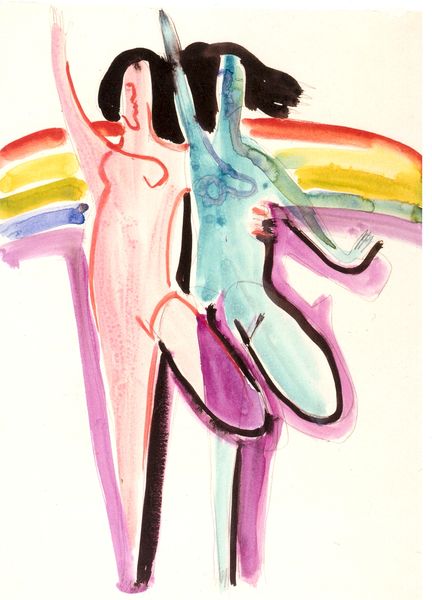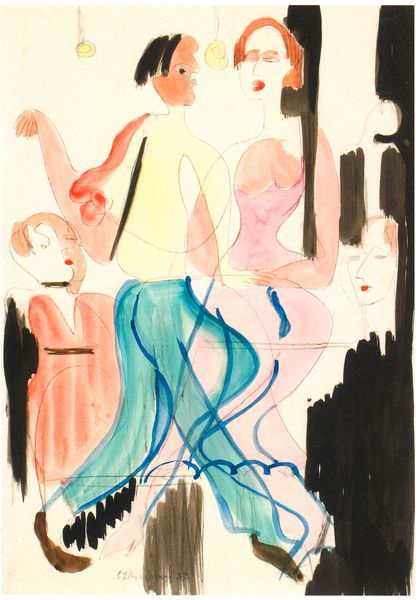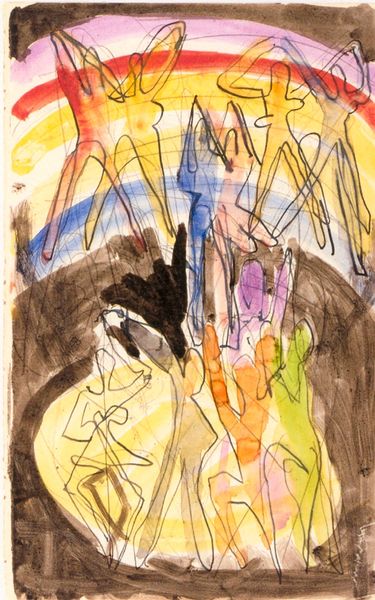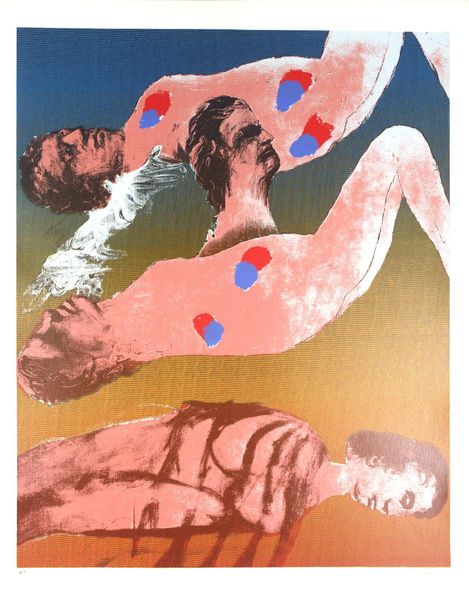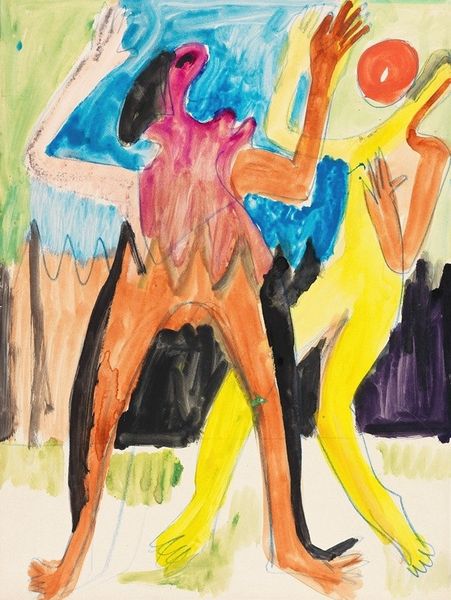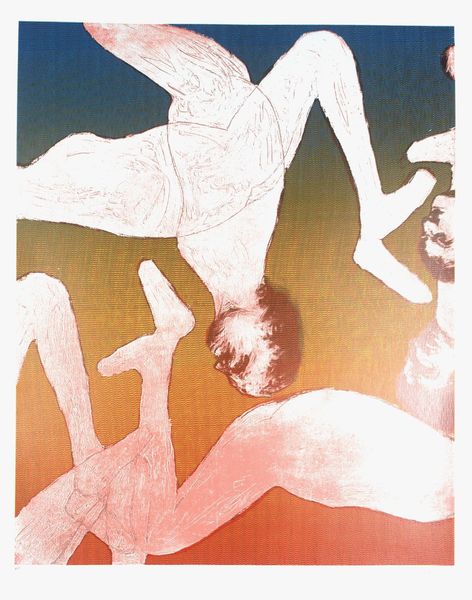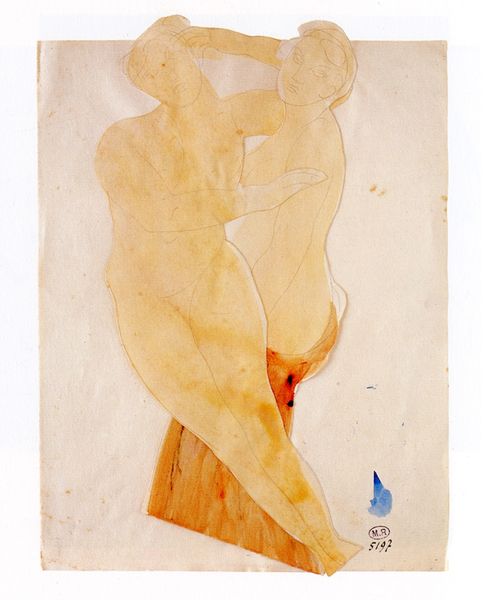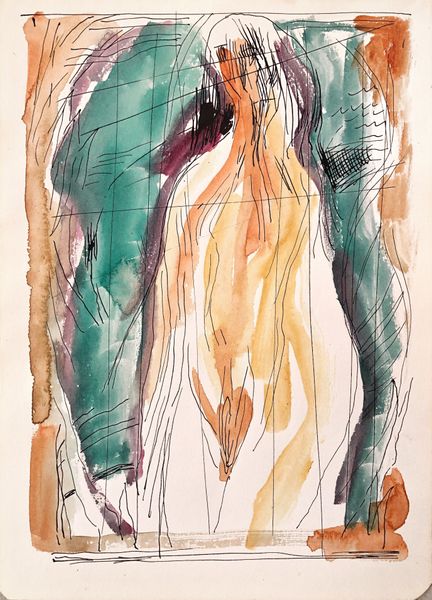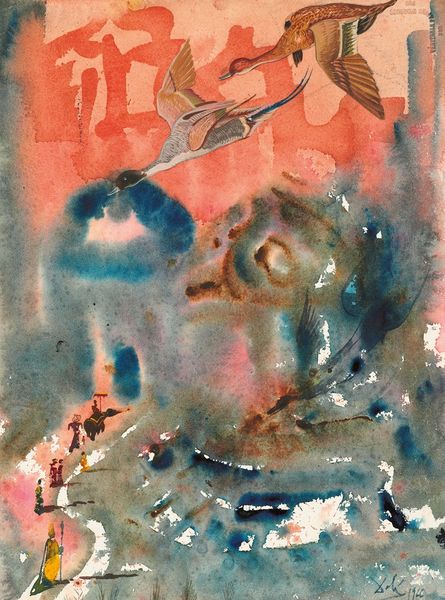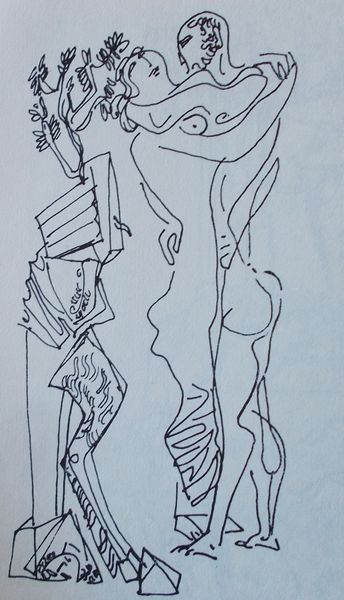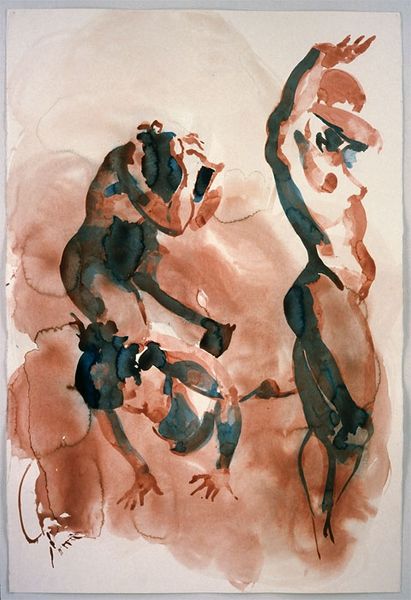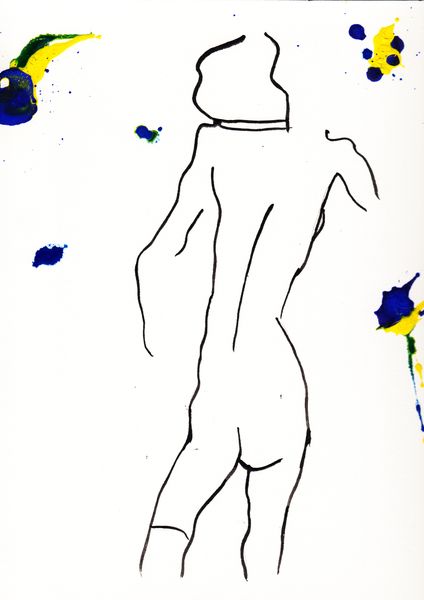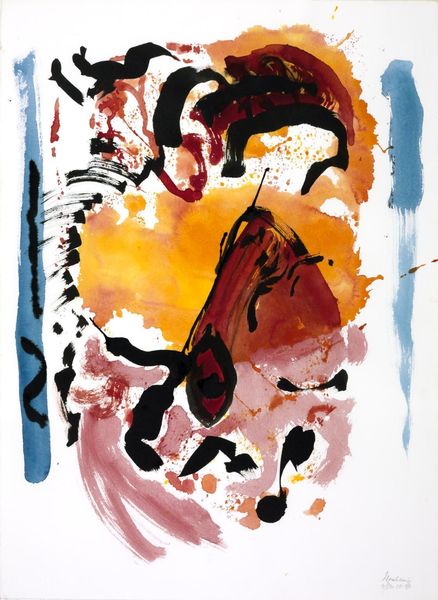
Dimensions: 28.8 x 21.1 cm
Copyright: Public domain
Editor: Here we have Ernst Ludwig Kirchner’s “Archer at Wildboden” from 1937, done in watercolor and drawing. I’m really struck by how the landscape feels so intertwined with the figures, they almost blend together. How do you interpret the relationship between the figures and their environment in this piece? Curator: The landscape *is* essential. Kirchner painted this in Davos, Switzerland, after fleeing Nazi Germany, labeled as a degenerate artist. The seemingly simple depiction of archers isn’t just pastoral; it’s loaded with his personal anxieties and broader political concerns. The Wildboden was Kirchner's backyard essentially, and represented a safe space away from a political context that destroyed artistic liberty. The blending of figures and the environment shows a desire to merge with, and be absorbed by a safe, peaceful place. Do you notice the restricted colour palette? What feelings does that evoke in you? Editor: It feels a little muted, like a memory or a fading hope maybe? Not the vibrant colors you might expect in a typical landscape. Curator: Exactly! The muted colors could reflect Kirchner's mental state, the psychological toll of persecution and exile. Remember, Kirchner was part of the Expressionist movement; art for him, and those around him, served as raw emotional expression but also, increasingly, social commentary. Do you see how the art here shows both at once? Editor: I see what you mean, the archer could be taking aim in different ways – personal survival and also maybe resisting oppression. I had missed so many levels of meaning here. Curator: That’s right! And by understanding the history and sociopolitical context, this simple scene turns into a very complex picture of displacement and defiance, with a focus on artistic and political survival. Editor: I'm walking away with a deeper understanding of how Kirchner's personal experiences shaped his artistic choices. Curator: Indeed, and how art, in turn, reflects the weight of history.
Comments
No comments
Be the first to comment and join the conversation on the ultimate creative platform.
